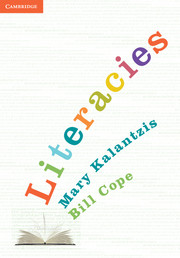Introduction - The work of learning and teaching literacies
Summary
Old basics and new
The two ‘multis’ of multiliteracies
This book offers a ‘Multiliteracies’ approach to literacy. We coined this term together with our colleagues in the New London Group during discussions in which we were trying to capture some of the enormous shifts in the ways in which people made and participated in meanings. The Multiliteracies approach attempts to explain what still matters in traditional approaches to reading and writing, and to supplement this with knowledge of what is new and distinctive about the ways in which people make meanings in the contemporary communications environment.
The term ‘Multiliteracies’ refers to two major aspects of meaning-making today. The first is social diversity, or the variability of conventions of meaning in different cultural, social or domain-specific situations. Texts vary enormously depending on social context – life experience, subject matter, disciplinary domain, area of employment, specialist knowledge, cultural setting or gender identity, to name just a few key differences. These differences are becoming ever more significant to the ways in which we interact in our everyday lives, the ways in which we make and participate in meanings. For this reason, it is important that literacy teaching today should not primarily focus, as it did in the past, only on the rules of a single, standard form of the national language.
- Type
- Chapter
- Information
- Literacies , pp. 1 - 18Publisher: Cambridge University PressPrint publication year: 2012
- 1
- Cited by



